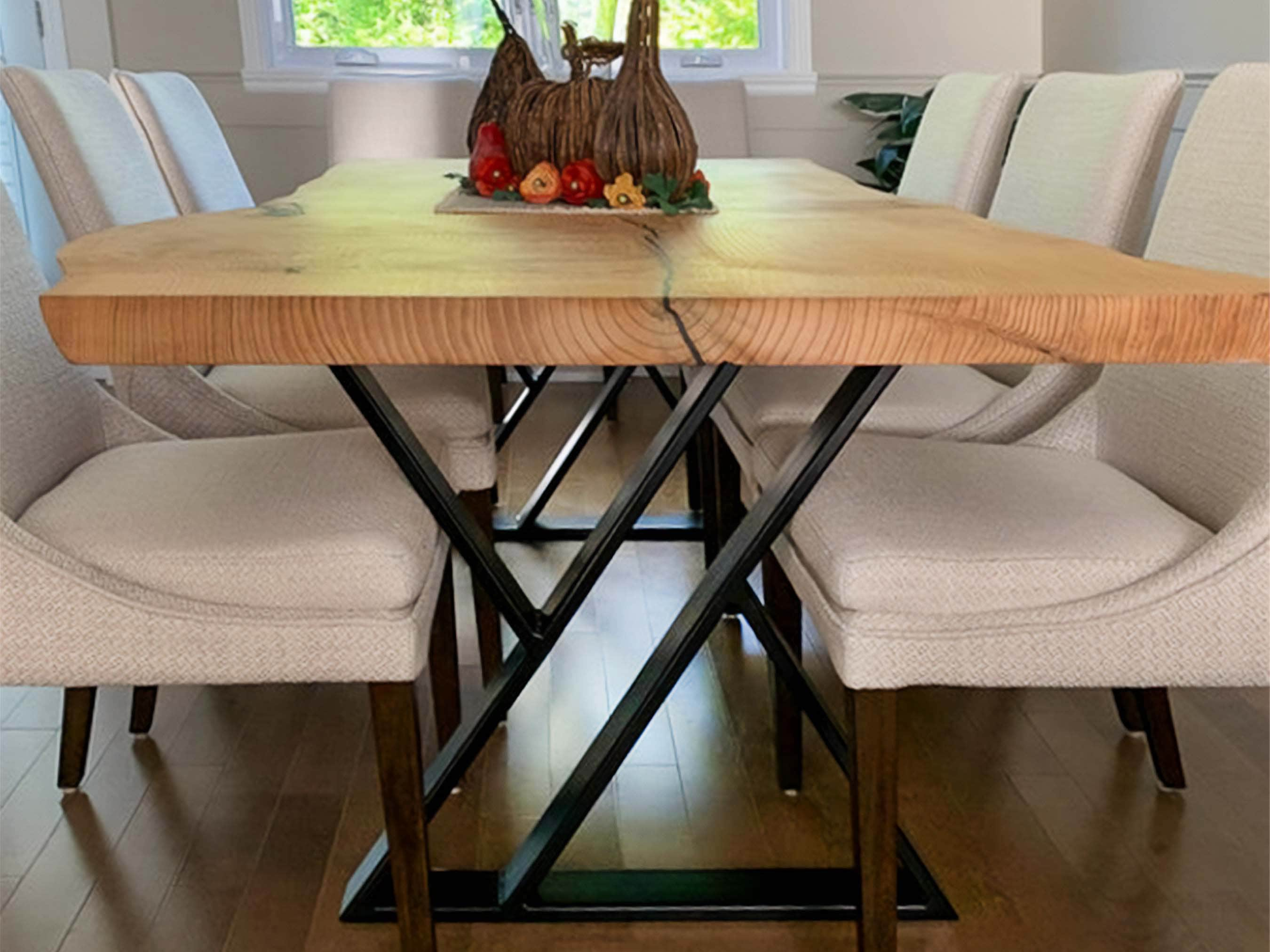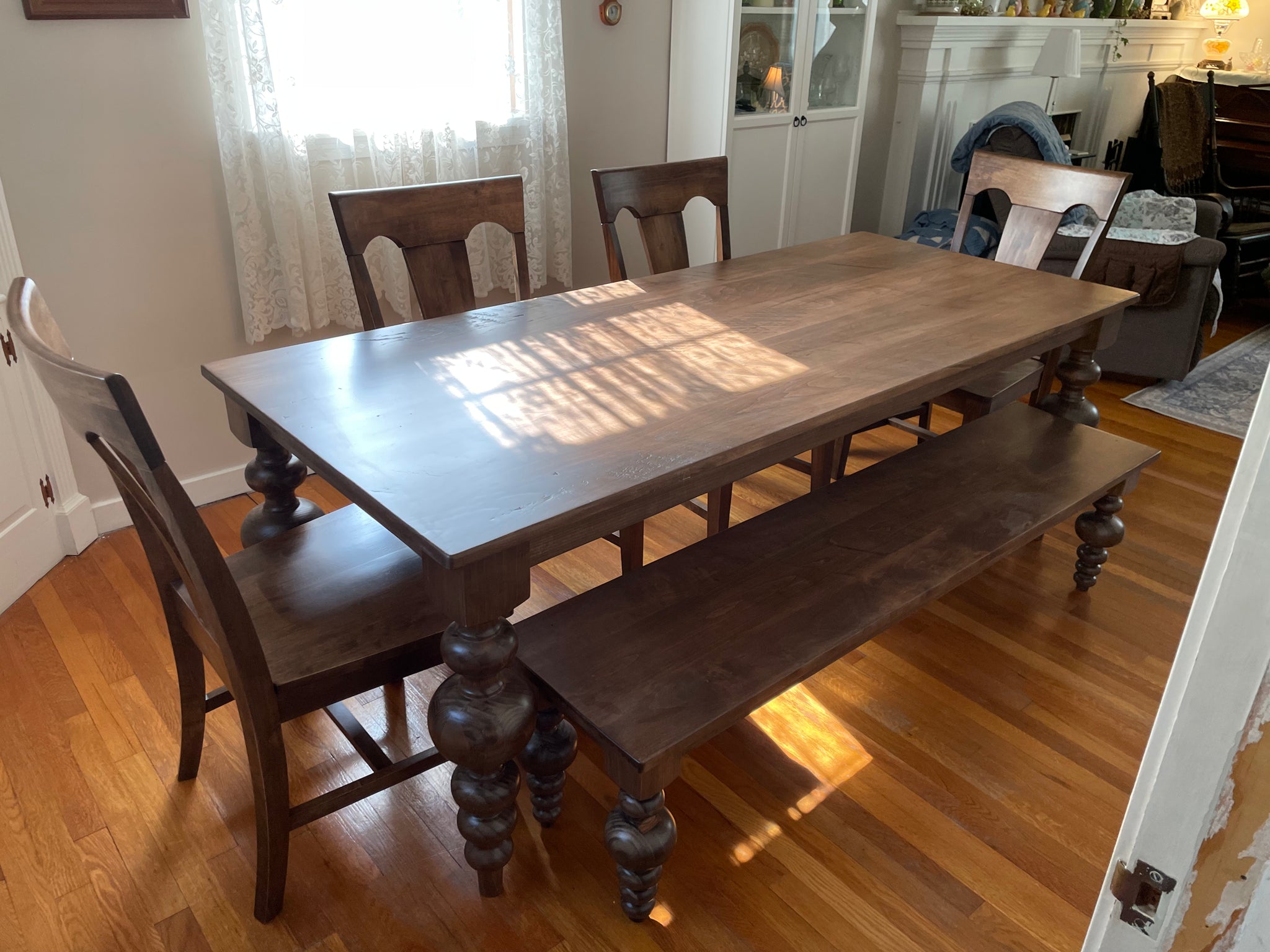Unique Dining Room Table Legs That Will Elevate Your Dining Area
Just How to Choose the Perfect Eating Area Table Legs for Your Home Décor
Choosing the perfect dining room table legs is a nuanced procedure that calls for mindful factor to consider of different aspects, including your space constraints, visual choices, and functional requirements. The interplay in between products, styles, and measurements can substantially influence the ambiance of your dining area, making it vital to approach this choice systematically.
Assess Your Eating Area
Analyzing your dining space is important for choosing the right table legs that complement both appearances and capability. Begin by measuring the dimensions of your dining location, including ceiling height, flooring space, and closeness to other furnishings. This info will assist identify the ideal size and elevation of your table, which straight influences the selection of table legs.
Next, take into consideration the style and design of your eating space. For example, an open-concept design might profit from table legs that provide aesthetic agility, such as slender metal or acrylic alternatives. On the other hand, an extra traditional setting may ask for sturdy wooden legs that supply a feeling of durability.
Review the existing shade scheme and products in your eating location. Balancing the table legs with these aspects produces a cohesive look that enhances the overall decor.
Ultimately, a comprehensive evaluation of your dining space will certainly lead you in making an educated choice, making sure that your table legs not only enhance the visual allure however likewise serve practical objectives.
Consider Your Design Preferences
When selecting dining room table legs, it is vital to mirror on your individual style preferences, as they dramatically affect the overall visual of your eating space. Your choice of table legs can either enhance or contrast with existing decoration, making it crucial to straighten them with your favored interior decoration style.
If your home leans towards a modern-day aesthetic, consider smooth metal or minimal wooden legs that give a tidy, uncluttered appearance. For a more traditional technique, ornate wood legs with elaborate makings can add a touch of style and class. Industrial styles take advantage of durable, resources such as reclaimed wood and steel combinations, mirroring a rugged beauty.
In addition, farmhouse and rustic styles usually favor tough, chunky legs that stimulate a feeling of warmth and convenience. Conversely, if your design is diverse, you may pick non-traditional forms or a mix of products to create aesthetic passion.

Evaluate Material Options
The choice of product for eating room table legs plays a critical function in both durability and aesthetic appeal. Typical products consist of timber, steel, and composite alternatives, each offering distinct qualities that can influence the general look and durability of your table.
Timber is a traditional selection, recognized for its heat and convenience. Woods like oak and walnut give remarkable strength and can be finished in various stains to match any design. Nevertheless, softwoods like yearn are a lot more vulnerable to damages and scrapes, making them less optimal for high-traffic areas.
Metal legs, often crafted from steel or light weight aluminum, show modernity and commercial appeal. They are immune and very long lasting to use, making them suitable for family members with youngsters or regular gatherings (dining room table legs). Additionally, steel can be completed in various shades, improving the personalization possibilities
Composite products, such as MDF or laminate, offer affordability and varied styles. While generally much less long lasting than solid timber or metal, they can still provide a fashionable appearance and are frequently very easy to preserve.
Ultimately, the product you choose need to line up with your lifestyle, visual preferences, and the degree of use your eating table will experience.
Determine Elevation and Size
Picking the suitable elevation and More Bonuses size for your dining-room table is crucial for both performance and convenience. The standard elevation for eating tables commonly varies from 28 to 30 inches, allowing adequate legroom for most people when seated. However, it is crucial to consider the dimensions of your eating space and the kinds of chairs you plan to utilize.

Furthermore, consider the proportions of your dining room. A larger table in a roomy area can produce a grand atmosphere, while a smaller sized table functions well in even more intimate setups. Inevitably, go to this web-site the appropriate elevation and dimension will certainly balance with your general style and boost the eating experience for you and your visitors.
Explore Personalization Opportunities

In addition, the style of the legs can be customized to fit numerous designs, such as rustic, modern, or commercial. As an example, tapered legs can stimulate a mid-century contemporary feel, while beefy, block-style legs may reverberate with standard or farmhouse decor.
Homeowners can additionally explore shade finishes, from all-natural wood discolorations to paint, allowing them to match or contrast with the table top and surrounding decoration.
Additionally, leg elevation can be adjusted to suit specific seating plans or individual choices, boosting both comfort and capability.
Lastly, one-of-a-kind embellishments, such as makings or decorative braces, can further Going Here customize the table legs, making the eating experience not just a dish yet a statement item in the home. By taking into consideration these personalization alternatives, homeowners can produce an eating room table that genuinely mirrors their individuality.
Final Thought
Picking the ideal dining space table legs calls for careful consideration of different variables, including the dimensions of the dining area, design choices, material sturdiness, and wanted elevation. Customization options even more improve the capacity to attain a natural visual that complements the overall design. By systematically examining these components, home owners can ensure that the chosen table legs not only fulfill functional requirements but also contribute positively to the dining experience and ambiance of the home.
Selecting the perfect dining room table legs is a nuanced process that requires careful consideration of numerous components, including your room restraints, visual choices, and functional requirements.Evaluating your dining space is crucial for selecting the right table legs that enhance both aesthetics and functionality.When determining dimension, determine the area where the table will be positioned to guarantee it fits easily, enabling for at least 36 inches of clearance around the table for very easy activity. A larger table in a roomy location can develop a grand atmosphere, while a smaller table functions well in more intimate settings.Picking the suitable dining room table legs calls for cautious consideration of numerous aspects, including the measurements of the dining space, design preferences, product toughness, and preferred elevation.